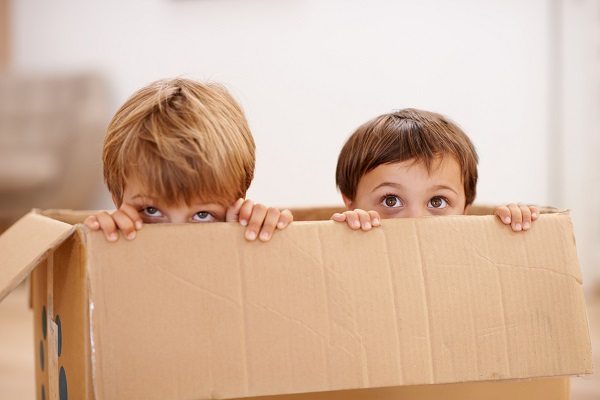How many parents despair on Christmas day when their children prefer a cardboard box over their new (maybe pricey) toys? Or when children are surrounded by colourful, stimulating games and proclaim to be bored? Ever wonder why that is? The truth is that children’s imaginations thrive on a blank canvas. Using cardboard boxes, or regular rooms in the house or garden, children create their own rules and adventures. This is called free play, and it’s one of the best parts of childhood.
Free play
Free play is an important part of children’s development. In their early years education, crèche or preschool, a lot of their time will be spent doing ‘free play’ indoors or outdoors, mixed with work encouraging literacy, numeracy and practical life skills. Free play actively stimulates a child’s imagination, and increases their social skills through conversation, discussion and compromise.
Versatility
A cardboard box can be an infinite number of places, objects or vehicles to a child. The flexibility of the box allows the child to put any kind of association on it, as opposed to following the ‘rules’ of a specific store-bought toy, which are predetermined by the marketing team and toy company.
Boredom stimulates creativity
Many of us were told that only boring people were bored, when we complained we had nothing to do as kids (that familiar refrain of ‘I’m bored!’). And it’s true, to an extent. Boredom is a blank canvas for creativity to flourish in. When engaging in unstructured play, that is games without predetermined rules or direction, children create entire societies, complete with forts, hierarchy and laws. The same can be said for the cardboard box. It’s a blank canvas on which children can base any game they desire to play. And it’s starts out with having nothing to do.
How do I take part in free play?
Though it may be frustrating, especially if money has been spent on what came in the box, know that any type of play, especially imaginative play is so great for children’s development!
- As a parent, you can offer paints, markers, towels or sheets, in order to forward their creative thinking.
- Focus on the process the children go through with the box. If they take pleasure in destroying it, that’s okay. They may not have a finished product to show off later, but the process of crushing it flat or ripping it apart will stimulate their motor skills.
- Let them direct the play. Even if they’re just sitting quietly in the box, know that your child is engaging in some pretty awesome imaginary play. Let them discover what they want to do themselves. By letting them be in control, you’re helping them understand and make sense of the world and be creative.
maternity&infant
Originally posted 2017-03-02 11:01:50.









